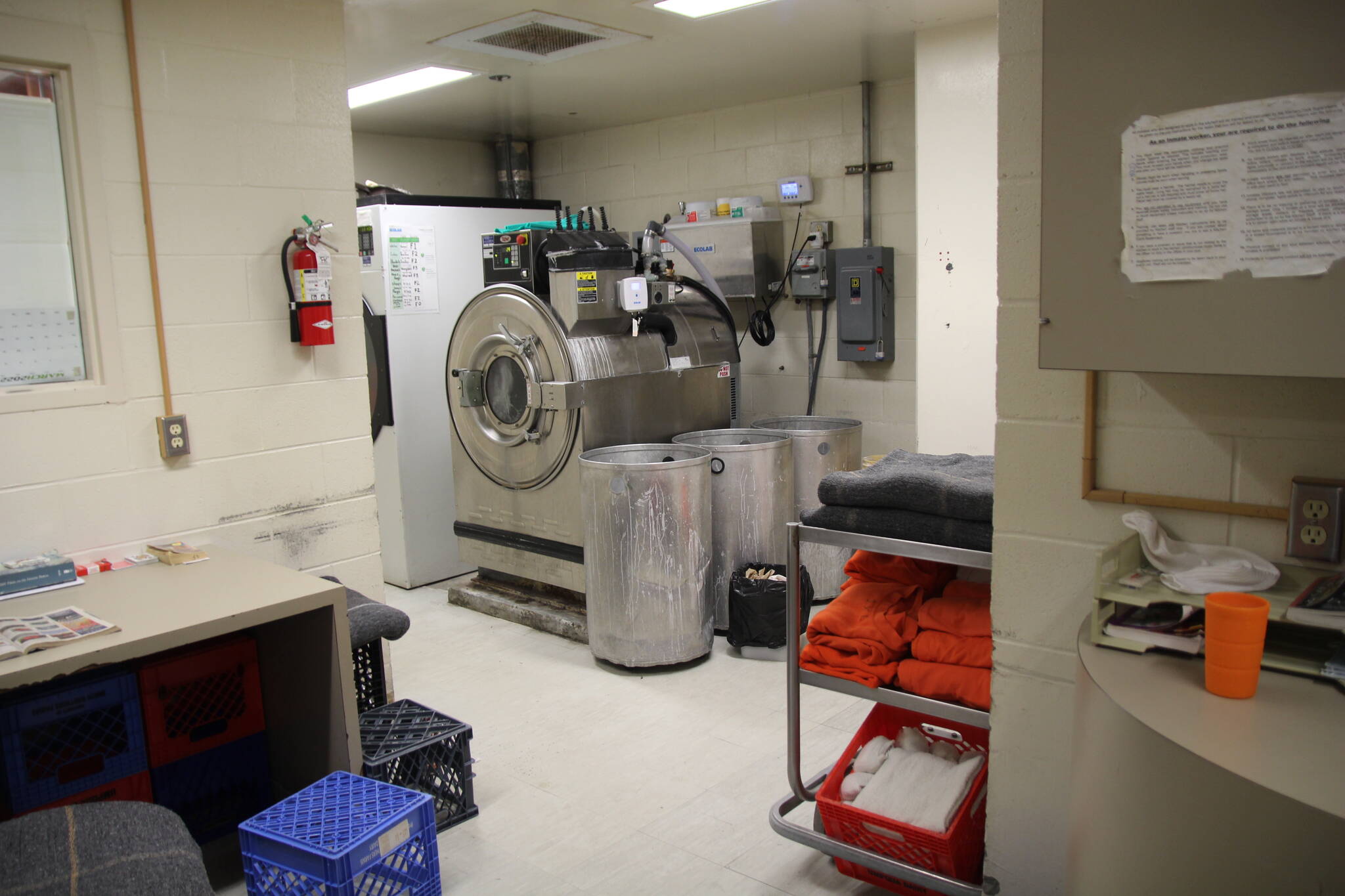The Island County jail houses a diverse range of individuals, from lifelong criminals with gang ties to people who were arrested for traffic-related crimes.
It’s a serious place. Among the 50 people currently being held in the facility are three men accused of homicide, two kidnapping suspects and several men arrested for sex crimes.
Most of the men and women incarcerated in the facility suffer from serious substance abuse or mental health disorders, or often both.
Yet it’s not an unhappy place. At least not entirely. The News-Times recently toured the facility and spoke to inmates and staff members. Inmates seemed to be remarkably upbeat and said they are treated with respect; a group of men in a special drug treatment program were entirely optimistic about the future.
Jail Chief Jose Briones instituted major changes to the jail since being hired to reform the facility in the wake of the death of Keaton Farris, a 25-year-old inmate who died from dehydration. Briones said he has emphasized a change in staff culture, while he and the sheriff worked with the Human Services department and others to institute programs designed to prevent inmates from ever coming back.
The aging building itself, however, has become an impediment to further improvements of the jail. The facility is nearing capacity, infrastructure is crumbling, there isn’t enough space for programs and the layout itself is from days past.
As a result, Island County officials are tentatively exploring the idea of making major improvements, whether that means building a new jail or remodeling the current one. The commissioners recently put out a request for proposal on a feasibility study for both the adult jail and adjacent juvenile justice facility. The independent study will determine the needs and come up with a recommendation for the best path forward.
“Imagine what we could do if we really had a facility built for our needs,” Briones said.
Island County Sheriff Rick Felici said he would like to see campus-type facilities, with a jail, treatment and housing at the same site. Like a “one-stop shop,” he said.
Island County Facilities Director Ryan Beach recently told the commissioners that the purpose of the feasibility study is to assess the adult and juvenile facilities and to project growth.
“The goal is to identify the most effective and efficient solution to meet long-term community needs, considering design, construction, and operating factors,” he said.
Yet county officials are concerned that some voters may not support a jail project, which is why they are moving forward with a study that will offer an independent look at the needs without any specific plans. Many people don’t understand the challenges that jails face, Briones said, or the substantial benefits — including financial — of offering services in the jail.
“It is well documented that treatment, education and pro-social activities substantially lessen the rate of recidivism,” he said.
The jail was originally built in 1972 and updated in the early 1980s. It is built to house a maximum of 58 inmates, although Briones and Felici pointed out that the “rule of thumb” in corrections is that 80% capacity is ideal. That way inmates can be moved around when necessary. The jail currently runs closer to 90% or higher.
The facility is configured in a linear style with 11 blocks; each one currently houses different populations, like high-risk inmates, special needs inmates and inmates in drug treatment. Women have their own block.
Yet Briones said the configuration is outdated.
“A lot has changed in corrections in the last 10 to 20 years,” he said.
One of the problems with the linear block configuration is that corrections deputies don’t have direct supervision of the jail populations. While monitors in the control room keep watch through a plethora of cameras, corrections deputies can’t see the inmates unless they go into the block, walk by and look in the window.
The modern style, Briones said, is to have a large pod or pods built around a 360-degree central monitoring station so that corrections staff and inmates can see each other. The theory, he said, is that “kids act differently when there is an adult in the room.” The current jail lacks natural light, which is a concern.
The jail has only one garage so sometimes officers with incoming suspects have to wait in line. The jail lacks storage space, which is especially a problem in the kitchen.
Yet one of Briones’ top concerns is the lack of programming space. The jail library serves many functions. It’s where inmates go to appear in court via video. People who need to be assessed by mental health professionals also use the video system in the room.
Several different programs take place in the room, but they sometimes have to be canceled when it’s in use.
Last week, a group of men in the Residential Substance Abuse Treatment program met in the room with counselors from Human Services. The men live together in a block and regularly attend sessions together.
Each of the five men emphasized how much the program has helped them and even changed them. They spoke with optimism about their futures and how they are going to cope on the outside. As part of the program, the counselors help them locate housing outside, which everyone agreed was one of the biggest obstacles to recovery.
“It feels like everyone actually cares about what I’m going to do after I get out,” said Robert Askew, an inmate who is due to be released soon. “It saved my life.”



